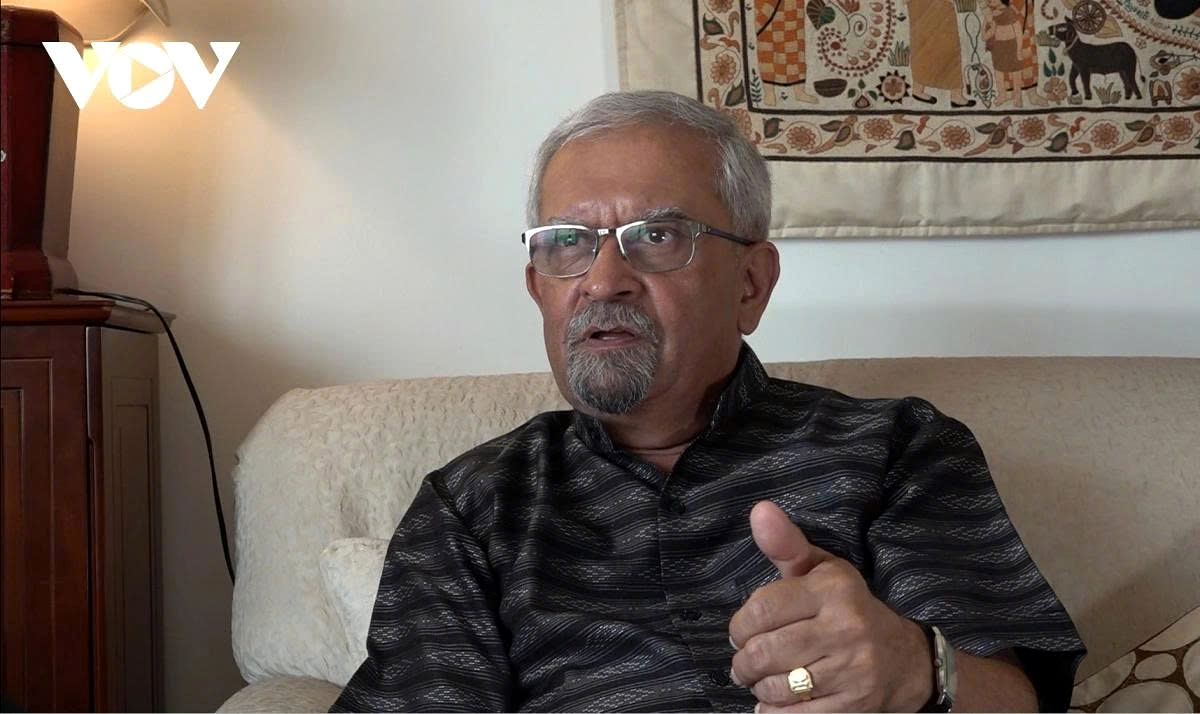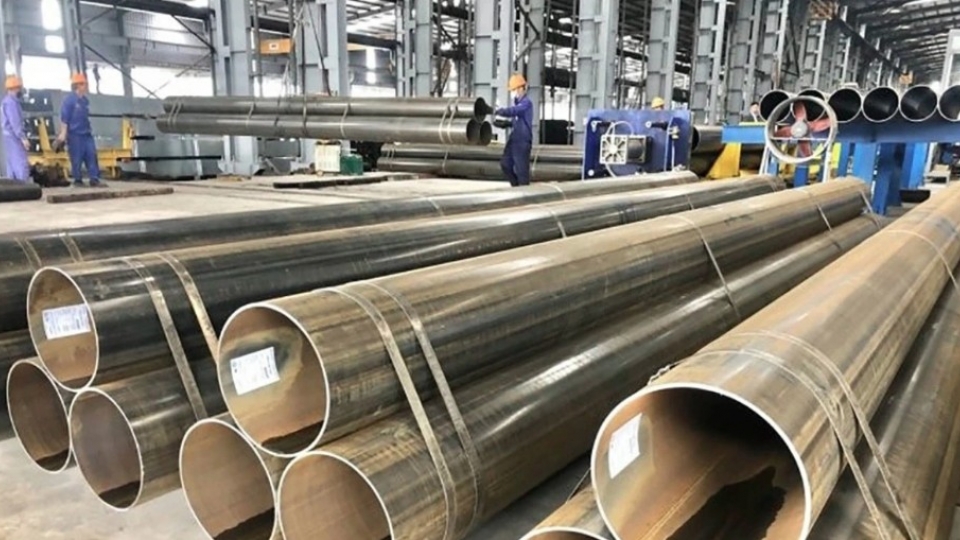Vietnam needs more strategic, beneficial, resilient integration: Indian Professor
VOV.VN - Professor Kamal Malhotra, former United Nations Resident Coordinator in Vietnam, has emphasised that Vietnam must pursue strategic international integration to maximise benefits and recover more effectively in a rapidly changing global environment.

Prof. Malhotra shared his insights on how Vietnam can better leverage the benefits of integration amid growing global uncertainty, in an exclusive interview recently granted to New Delhi –based VOV correspondents.
His remarks came after the Political Bureau of Vietnam released Resolution 59 on international integration in the new context that sets the goal of maximising external resources and favourable conditions to build an independent, self-reliant, resilient economy for sustainable development. The Resolution views international integration not merely as opening up and engaging, but as a comprehensive national endeavor that demands proactive, decisive, and strategic leadership
The following is the full text of the interview.
VOV: The Communist Party of Vietnam views international integration as a key pillar in its strategy to modernise the economy over the next two decades. What do you think of this objective?
Prof. Malhotra: Vietnam has already been integrating into the global economy quite rapidly since Đổi Mới 1.0 (reform) in 1986. But the big concern about rapid integration is that the country needs to develop a strong regulatory framework to ensure that this integration happens in a manner that is strategic, and genuinely benefits the Vietnamese people.
I think that the initial response of Vietnam to the 46% tariffs that the Trump administration threatened to levy on April 2 was essentially a political response. It was not an economic response. I’m a political economist. From an economic point of view, it did not make any sense. What Vietnam needs to do is to be very careful that it doesn't reduce all its tariff barriers.
It must be very strategic - again - in which ones it reduces, which ones it keeps, if it wants to grow its own industry. Otherwise, right now, Vietnam's economy is highly dependent on foreign actors. 75% of its exports are dependent on foreign companies operating in the country. You can't grow your small and medium enterprises without tariffs.
All of this is related to the question about integration. The issue is not whether you integrate because you're already integrating. So, the real issue is about how you integrate, at what pace, with what safeguards, with what regulatory framework, in which areas do you prioritise the integration, where do you open and reduce your tariffs, where do you not open.
And Vietnam should urge the United States to remove its designation of Vietnam as a non-market economy, as this status is both discriminatory and unfair.
So, there are many issues. It’s not a simple matter of just integrating.
VOV: Given the turbulent global environment, how does this affect Vietnam’s integration goals?
Prof. Malhotra: Vietnam has set ambitious growth targets of 8% by 2025 and potentially double-digit growth over the next five years. But now the emphasis must shift toward the quality of growth rather than just the quantity.
Moreover, the global economic climate, particularly with the impact of Trump-era tariffs, will significantly affect Vietnam. The country is more dependent on exports than most other Southeast Asian nations. As such, it cannot simply set a growth number and expect it to materialize. The global economy, especially the United States, is showing signs of a slowdown. A US recession would have major consequences for Vietnam.
Therefore, diversifying export markets is an urgent priority. It should focus much more on the markets of the Regional Comprehensive Economic Partnership (RCEP) such as Japan, the Republic of Korea, even China, and its immediate region. The European Union is also very important.
Overall, there are huge challenges ahead. Some of these steps are in the right direction, particularly the focus on science, research, and technology, but there must be a much clearer strategy of how that will be achieved. Just announcing it and saying 2% of GDP will be allocated, or that 3% will come from the national budget, that’s only the beginning of a long journey for Vietnam.
VOV: Is the current global uncertainty a major risk to Vietnam’s economy?
Prof. Malhotra: Given this context, we need to assess whether Vietnam’s 8% economic growth target for 2025 is realistic. That’s the real issue, not only because of direct US tariffs on Vietnam’s exports, but also due to the broader global and regional geopolitical and geo-economic repercussions of an escalating tariff war.
These developments will ripple through supply chains and impact demand across major markets. This is a critical moment for Vietnam to reassess its growth expectations and underlying strategy. But I'm still hopeful for Vietnam.
I think Vietnam is on track to become an upper-middle-income country within the next five years, maybe even sooner. If you look strictly at GDP per capita, which is a narrow unidimensional criterion used merely for that classification by the World Bank, Vietnam has already crossed US$4,000. To reach upper-middle-income status, it only needs to go up to around US$4,500. But that’s a very narrow definition of development. Even the 2045 target is framed purely in terms of GDP per capita - US$14,500. But even in those very narrow terms, that’s a huge leap.
VOV: What recommendations do you make to clarify or fine-tune this goal?
Prof. Malhotra: It’s a significant jump, and frankly, it’s hard to envision from today’s perspective. I’m not saying it’s unachievable, it’s possible, but it’s difficult to see clearly at this moment.
Reaching US$4,500 per capita is certainly possible, but again, that’s only one criterion. The more important questions revolve around Vietnam’s workforce, employment, and whether the country can begin producing higher value-added products, both for the domestic market and for export. Those are the more critical benchmarks.
One more point I’d like to raise: Vietnam is now engaged in a race between getting rich or getting old first. That’s the fundamental challenge. Demographically, the country doesn’t have much time. The window of opportunity is narrow. It’s like a sprint to beat demographic ageing, and I see that as one of Vietnam’s most serious structural challenges.
VOV: Does this mean Vietnam needs to act urgently to unleash the golden opportunity before it slips away?
Prof. Malhotra: Yes, but only a little. I’m not pessimistic, I think I’m being realistic. I’ve observed Vietnam for 36 years now and, in my own way, I’ve been part of the Vietnam story in five different roles.
During Đổi Mới 1.0, you were starting from a very low base. The leap was easier in relative terms. Today, you’re in a completely different world, working from a far more complex and demanding baseline.
This is a much more challenging world due to factors like the ongoing global tariff war and escalating geopolitical and geo-economic uncertainty. The world has not seen this level of unpredictability since, perhaps, the fall of the Berlin Wall and the USSR. In fact, when it comes to global economic uncertainty — geoeconomics — some analysts are comparing this period to the 1930s Great Depression.
So, the external environment is incredibly challenging for a country like Vietnam, especially one that is already so deeply integrated into the global economy. Integration is not new for Vietnam. Some economists, including myself, would argue that Vietnam is already too integrated. Its economy is highly open and deeply reliant on external markets, which increases its vulnerability.
The real issue isn’t about whether to integrate — Vietnam already has and is doing so and this will continue, regardless of any new pronouncements in this regard. The challenge now is how to make that integration more strategic, more beneficial, and more resilient for Vietnam’s long-term development.
VOV: Thank you for your insights, Professor.





